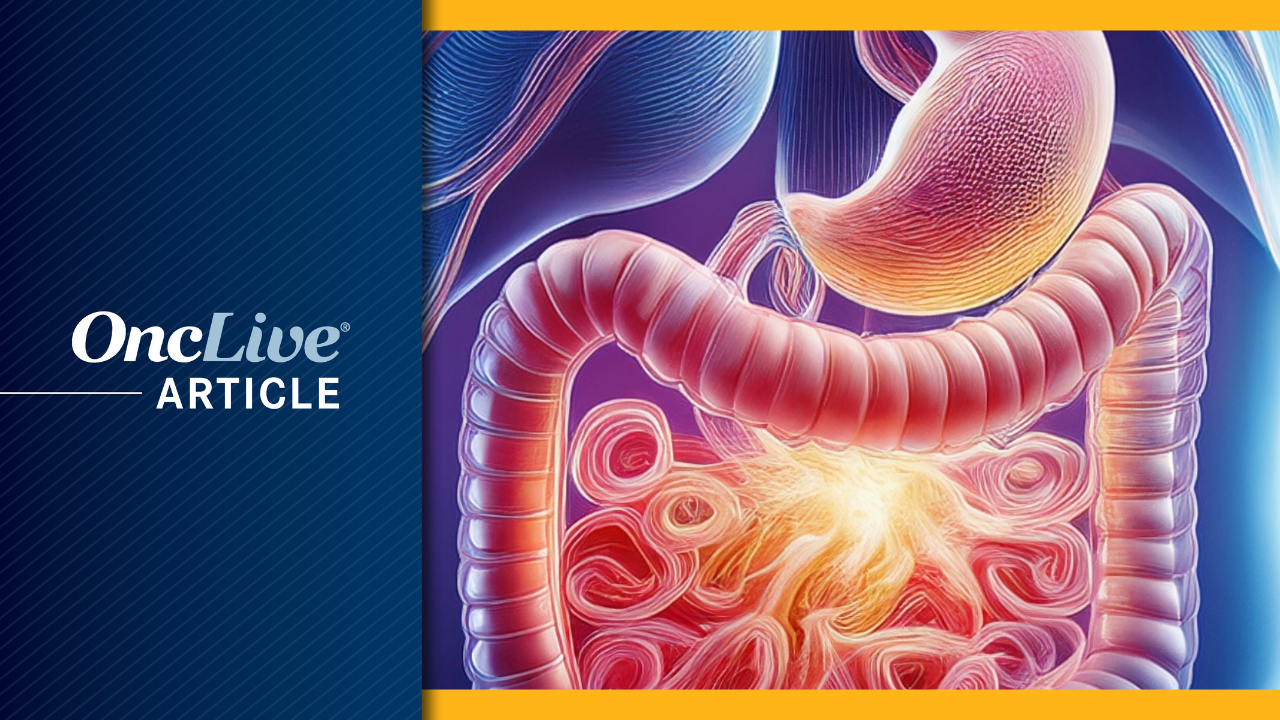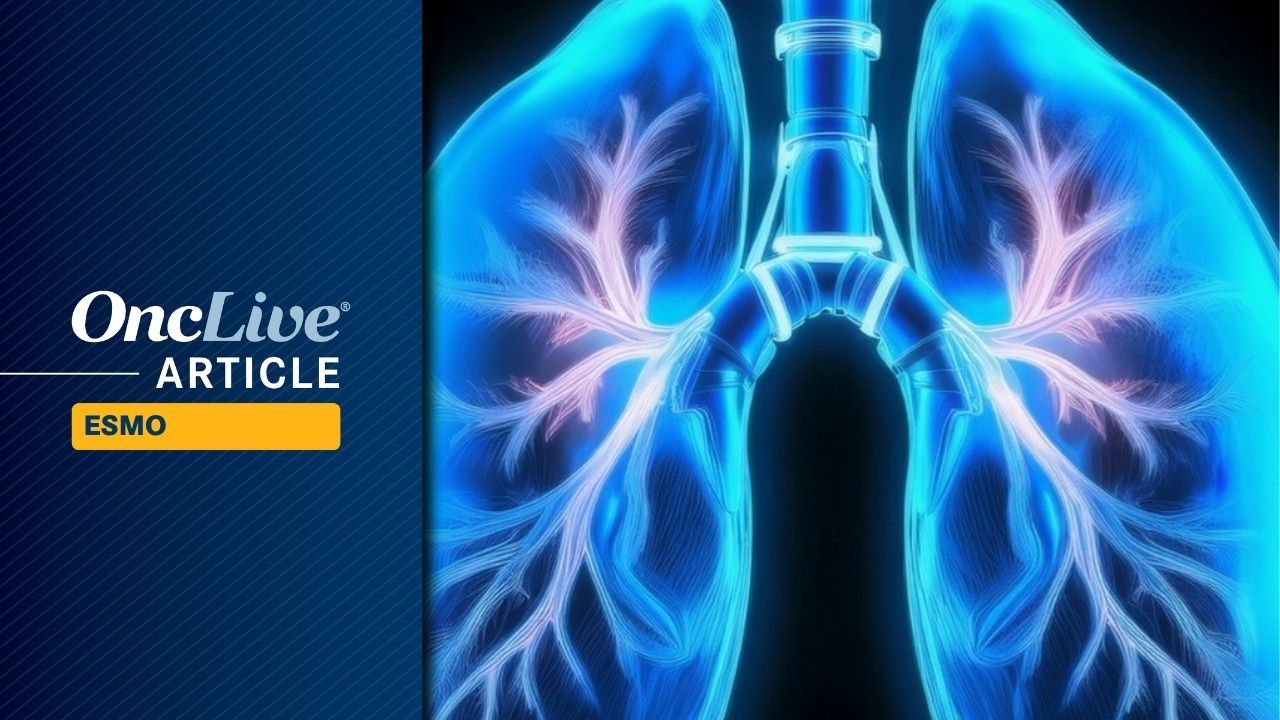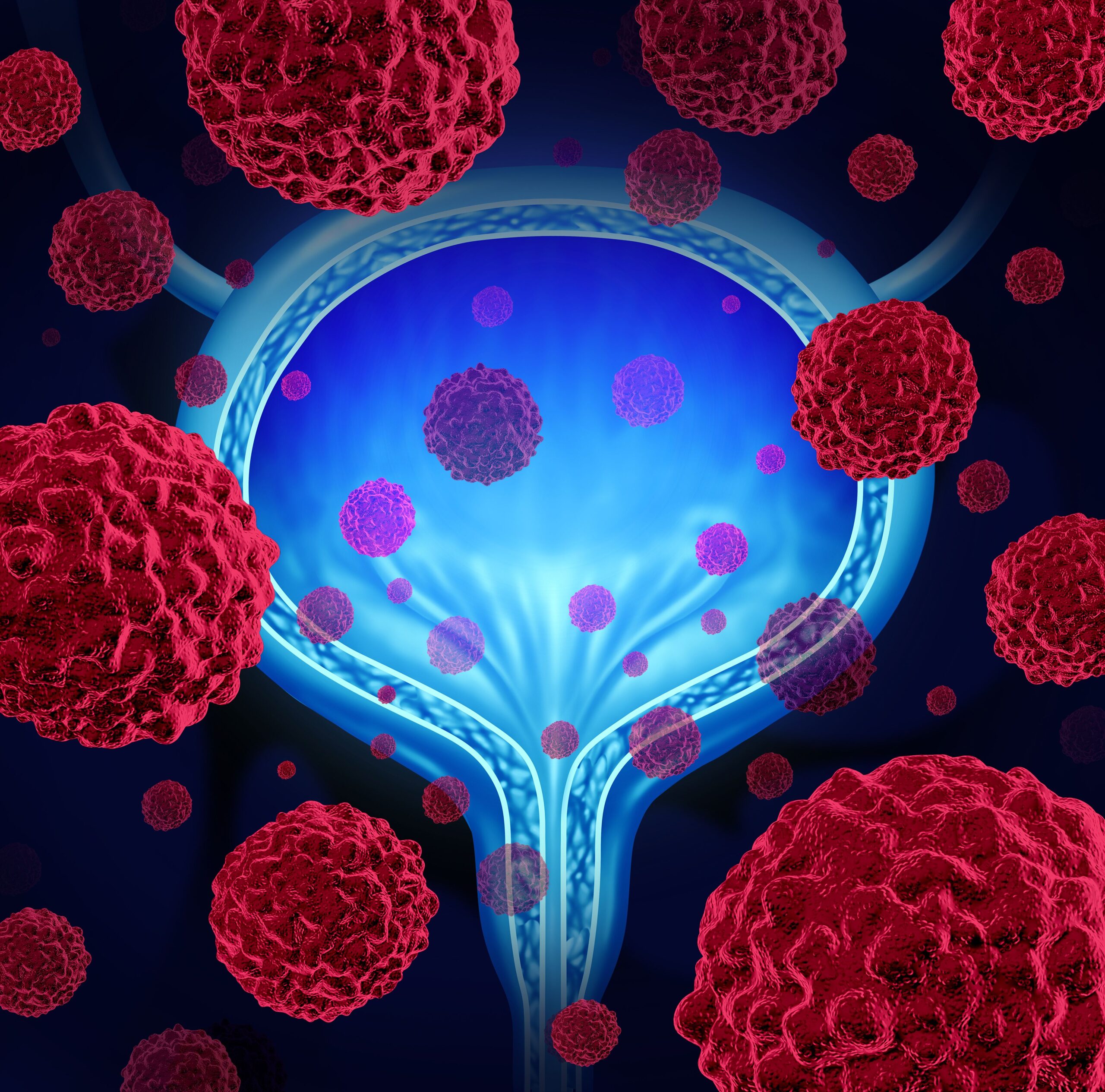Wine bottles on show. Image by Tim Sandle.
Beer and wine have been staples of human history for millennia. These alcoholic beverages are still yielding new surprises. As an example, recent research has highlighted how yeast extracts can cloud…

Wine bottles on show. Image by Tim Sandle.
Beer and wine have been staples of human history for millennia. These alcoholic beverages are still yielding new surprises. As an example, recent research has highlighted how yeast extracts can cloud…

The Academy Museum of Motion Pictures hosted its fifth annual gala at the Academy Museum in Los Angeles last night in support of the museum’s education initiatives, public programming and future exhibitions. This year’s Gala…

The addition of tislelizumab-jsgr (Tevimbra) to induction chemotherapy and concurrent chemoradiotherapy (CRT) boasted higher composite complete response (cCR) rates, which translated to improved survival vs the historical control of concurrent CRT alone, in patients with esophageal squamous cell carcinoma (ESCC), according to data from the phase 2 EC-CRT-002 trial (NCT05520619) presented at the
Patients were randomly assigned to group A (n = 57) or group B (n = 57). Investigators also included a historical control group for comparison consisting of 55 patients from a phase 2 trial (NCT02403531) who experienced a 1-year PFS rate of 56% with concurrent CRT alone. Patients in group A received induction chemotherapy consisting of paclitaxel plus cisplatin every 3 weeks for 2 cycles; concurrent CRT with intensity modulated radiation therapy at 50.4 Gy over 28 fractions and paclitaxel plus cisplatin every week for 5 cycles; and tislelizumab at 200 mg every 3 weeks for a total of 16 cycles (induction, n = 2; concurrent, n = 2; adjuvant, n = 12). Patients in group B received the same treatment schedule with the exception that tislelizumab was only administered for a total of 4 cycles (induction, n = 2; concurrent, n = 2).
Sidebar: Notable Findings From the EC-CRT-002 Trial
The 1-year progression-free survival (PFS) rate in group A was 52% vs 56% with the control (P = .52). The 1-year PFS rate in group B was 73% vs 56% with the control (P = .024). The 1-year overall survival (OS) rates were 82% and 69% in group A and the control arm, respectively (P = .32). The respective 1-year OS rates in group B vs the control arm were 85% and 69% (P = .004).
“Tislelizumab plus induction chemotherapy and concurrent CRT demonstrated superior efficacy and manageable toxicity compared [with] chemoradiotherapy alone in locally advanced ESCC,” Mian Xi, MD, lead study author and chief physician of radiation oncology at Sun Yat-Sen University Cancer Center in Guangzhou, China, said in a presentation.
Definitive CRT is the preferred standard of care (SOC) for patients with locally advanced ESCC. Findings from a prior randomized phase 2 trial (NCT02403531) led by Xi failed to show an OS benefit with the addition of induction chemotherapy to definitive CRT vs definitive CRT alone in patients with ESCC.2 However, patients who responded to induction chemotherapy displayed improved OS vs those in the CRT alone arm.
As such, investigators theorized that combining anti–PD-1 therapy with induction chemotherapy and concurrent CRT could improve OS, resulting in a new SOC for patients with locally advanced disease.
This served as the basis for the present multicenter, randomized, parallel-group, phase 2 trial. To be eligible for enrollment, patients had to have newly diagnosed, unresectable, locally advanced, histologically confirmed ESCC; be between the ages of 18 and 70 years; have an ECOG performance status of 0 to 2; and have no history of a concomitant or prior malignancy.
The primary end point was PFS. Secondary end points were OS, cCR, safety, and quality of life.
Between October 2022 and October 2024, 114 patients were randomly assigned to receive treatment. The data cutoff was July 31, 2025.
Baseline characteristics in group A (n = 57) indicated that most patients were male (84%) and had upper (49%) or middle (37%) as opposed to distal (14%) tumors. The median age was 61 years (range, 38-70), and represented cTNM stages were II (5%), III (33%), IVA (39%), and IVB (23%). In group B (n = 57), most patients were male (75%) and had upper (42%) or middle (42%) vs distal (16%) tumors. The median age was 61 years (range, 37-70), and cTNM stages included II (4%), III (32%), IVA (39%), and IVB (26%).
The cCR rates were 51% and 40% in group A vs the control arm (P = .334). Patients in group B and the control arm experienced cCR rates of 70% and 40%, respectively (P = .003).
Treatment-related adverse effects included lymphopenia (74.6%), esophagitis (16.7%), anemia (14.9%), leukopenia (13.2%), neutropenia (8.8%), pneumonitis (2.6%), esophageal fistula (2.6%), alanine aminotransferase/aspartate aminotransferase level elevation (1.8%), and rash (0.9%).
Exploratory analysis revealed that patients with PD-L1 combined positive scores (CPS) of 1 or greater had improved PFS vs those with PD-L1 CPS below 1 (P = .036). Moreover, patients with higher levels of CD8 positivity had improved PFS (P = .017). Patients who tested negative for circulating tumor DNA also experienced improved survival (P < .001).
“[The] benefit of adjuvant immunotherapy after definitive CRT remains uncertain,” Xi concluded.
Disclosures: Xi had no disclosures to declare.


Saudi couturier Tima Abid opened the third edition of Riyadh Fashion Week, which debuted a spectacular open-air runway venue tucked into a red rock canyon, and abuzz with drone cameras.
Opening her display with models…

| Meal Plan at a Glance | ||
|---|---|---|
| Breakfast/ A.M. Snack | Lunch/ P.M. Snack | Dinner/ Evening Snack |
| French toast & berries/ Mixed nuts | Tuna rice bowl/ Cocoa chia pudding | Sweet chili salmon bowl |
| Vanilla-cranberry overnight oats/ Yogurt… | ||

The intracranial objective response rate (ORR) in RANO-BM–evaluable patients (n = 16) was 31.3% (n = 5), which included 1 intracranial complete response. Notably, 2 of 5 intracranial responders also had leptomeningeal disease at baseline, and 4 of the 5 did not receive prior CNS radiotherapy. The intracranial disease control rate (DCR) was 68.8%, and the median intracranial duration of response (DOR) was 8.1 months (95% CI, 3.1-not evaluable).
The systemic ORR in RECIST 1.1–evaluable patients (n = 29) was 27.6% (n = 8) and the DCR was 58.6%. The median DOR was 7.6 months (95% CI, 2.07-9.07).
“Zipalertinib demonstrated clinically meaningful intracranial antitumor activity…in patients with NSCLC harboring EGFR exon 20 insertions or other uncommon single or compound uncommon mutations,” Helena A. Yu, MD, attending physician at Memorial Sloan Kettering Cancer Center in New York, New York, stated in the presentation. “The intracranial response rate was similar to the systemic response rate in the reported population,” Yu added.
Poor prognosis is associated with the presence of CNS metastases in patients with EGFR-mutant NSCLC, reflecting a clinical need for more effective treatment options.
Zipalertinib is an oral, highly selective, irreversible EGFR TKI that has proven active in advanced or metastatic NSCLC with EGFR exon 20 insertion mutations in the phase 1/2 REZILIENT1 trial (NCT04036682), including in patients with CNS metastases.2
To be eligible for enrollment in the subsequent REZILIENT2 trial, patients had to be at least 18 years of age and have received a diagnosis of locally advanced or metastatic NSCLC with documented exon 20 insertions or other uncommon single or compound non–EGFR exon 20 insertion mutations. Measurable disease per RECIST 1.1/CNS per RANO-BM criteria was also required, as was an ECOG performance status of 0 or 1.
Patients with active brain metastases had to be newly diagnosed and/or have progressing brain lesions without CNS targeted therapy and/or leptomeningeal disease. There was no limit on the number of prior therapies patients could have received in the advanced or metastatic setting.
Patients received 100 mg of oral zipalertinib twice daily until progressive disease or other discontinuation criteria were met. A total of 32 patients were enrolled, 16 of whom were evaluable by RANO-BM.
The data cutoff was February 17, 2025, and the study remains ongoing.
The primary end point was ORR per RECIST 1.1 criteria. Secondary end points included intracranial ORR, intracranial DOR, intracranial DCR per RANO-BM, and safety.
Within the RANO-BM–evaluable population (n = 16), 62.5% had not received prior CNS radiotherapy. Among all enrolled patients (n = 32), 68.8% did not receive any prior CNS radiotherapy.
In the former population, the median age was 63.0 years (range, 23-75). Most patients were female (56%), White (63%), and had an ECOG performance status of 1 (63.0%). Almost one-fifth (19%) of patients had leptomeningeal disease. Most patients also had EGFR exon 20 insertion mutations (56%) as opposed to other EGFR mutations (44%). The median number of prior lines of systemic therapy was 2 (range, 0-4); 56% had received prior EGFR TKI therapy and 6% received prior amivantamab-vmjw (Rybrevant).
Within the total population, the median age was 62.5 years (range, 23-83). Most patients were female (56%), White (50%), and had an ECOG performance status of 1 (72.0%). Almost one-fifth (19%) of patients had leptomeningeal disease. Most patients also had EGFR exon 20 insertion mutations (66%) as opposed to other EGFR mutations (41%). The median number of prior lines of systemic therapy was 2 (range, 0-4); 44% had received prior EGFR TKI therapy and 6% received prior amivantamab-vmjw (Rybrevant).
Yu also noted that the safety profile of zipalertinib at the given dose of 100 mg twice daily was consistent with that from prior data. Yu emphasized the low incidence of EGFR-related grade 3 or greater toxicity, noting that there was no grade 3 or greater diarrhea. Moreover, 2 cases of fatal interstitial lung disease occurred.
Treatment-related adverse effects (TRAEs) that occurred in at least 15% of patients included paronychia (grade 1, 6.3%; grade 2, 15.6%; grade ≥3, 3.1%), dermatitis aceniform (grade 1, 9.4%; grade 2, 9.4%; grade ≥3, 3.1%), stomatitis (grade 1, 15.6%; grade 2, 6.3%; grade ≥3, 0%), anemia (grade 1, 9.4%; grade 2, 0%; grade ≥3, 9.4%), dry skin (grade 1, 6.3%; grade 2, 9.4%; grade ≥3, 0%), and rash (grade 1, 6.3%; grade 2, 6.3%; grade ≥3, 3.1%).
Dose interruptions due to TRAEs occurred in 15.6% of patients.
“The study is ongoing and full results from cohort C of the REZILENT2 trial will be forthcoming in a future presentation,” Yu concluded.
Disclosures: Yu reported consulting or advisory roles for AstraZeneca, Daiichi Sankyo, Blueprint Medicines, Janssen, C4 Therapeutics, Cullinan Oncology, Black Diamond Therapeutics, Taiho Oncology, AbbVie, Novocure, Takeda, Bristol Myers Squibb/Roche, Orion Clinical; research funding from AstraZeneca (Inst), Astellas Pharma (Inst), Lilly (Inst), Novartis (Inst), Pfizer (Inst), Daiichi Sankyo (Inst), Cullinan Oncology (Inst), Janssen Oncology (Inst), Erasca, Inc (Inst), Blueprint Medicines (Inst), Black Diamond Therapeutics (Inst), and Systimmune (Inst); and other relationship with Astellas Pharma.

Disitamab vedotin plus toripalimab-tpzi (Loqtorzi) demonstrated a statistically significant improvement in survival compared with standard-of-care chemotherapy as a frontline treatment for patients with HER2-expressing locally advanced or metastatic urothelial carcinoma, according to results from the phase 3 RC48-C016 trial (NCT05302284) shared at the
With a median survival follow-up of 18.2 months and a data cutoff date of March 31, 2025, the median progression-free survival (PFS) per blinded independent review committee (BIRC) was 13.1 months (95% CI, 11.1-16.7) with the disitamab vedotin treatment compared with 6.5 months (95% CI, 5.7-7.4) with chemotherapy, representing a 64% reduction in the risk of progression or death (HR, 0.36; 95% CI, 0.28-0.46; P <.0001). The 12- and 18-month PFS rates with disitamab vedotin were 54.5% and 38.4%, respectively, vs 16.2% and 7.5% with chemotherapy.
The median overall survival (OS) was 31.5 months (95% CI, 21.7-not evaluable) in the disitamab vedotin arm compared with 16.9 months (95% CI, 14.6-21.7) in the chemotherapy arm, correlating with a 46% reduction in the risk of death (HR, 0.54; 95% CI, 0.41-0.73; P <.0001). The 12-, 18-, and 24-month OS rates in the disitamab vedotin arm were 79.5%, 64.6%, and 52.8%; in the chemotherapy arm, these rates were 62.5%, 48.1%, and 39.4%.
The PFS and OS benefits were consistent across all prespecified subgroups.
In the disitamab vedotin arm, the overall response rate (ORR) per BIRC was 76.1% (95% CI, 70.3%-81.3%), with complete responses (CRs) in 4.5% and partial responses (PRs) in 71.6% of patients; in the chemotherapy arm, the ORR was 50.2% (95% CI, 43.7%-56.7%), with CRs in 1.2% and PRs in 49.0%. The investigator-assessed ORR with disitamab vedotin was 71.6% (95% CI, 65.5%-77.2%), with CRs in 4.1% and PRs in 67.5% of patients compared with a 49.8% ORR (95% CI, 43.3%-56.3%) with chemotherapy, comprising of CRs in 3.3% and PRs in 46.5% of patients.
The median duration of response per BIRC was 14.6 months (95% CI, 11.3-18.7) with the disitamab vedotin combination compared with 5.6 months (95% CI, 5.3-5.8) with chemotherapy. In the disitamab vedotin arm, the 6-, 12-, and 18-month DOR rates were 78.9%, 58.5%, and 42.4%; in the chemotherapy arm, these rates were 37.2%, 19.0%, and 8.7%.
“The phase 3 RC48-C016 study demonstrated for the first time superiority of an anti-HER2 antibody-drug conjugate plus an anti-PD1 inhibitor in a biomarker-selected patient population with [locally advanced and metastatic urothelial cancer],” lead study author Jun Guo, of the Key Laboratory of Carcinogenesis and Translational Research in the Department of Melanoma and Sarcoma at Peking University Cancer Hospital and Institute in
The open-label RC48-CO16 trial randomly assigned 484 patients 1:1 to receive either disitamab vedotin plus toripalimab (n = 243) or gemcitabine plus cisplatin/carboplatin (n = 241). Treatment consisted of 2.0 mg/kg of intravenous disitamab vedotin and 3.0 mg/kg of toripalimab every 2 weeks, or gemcitabine at 1000 mg/m2 on day 1 and day 8 and cisplatin at 70 mg/m2 on day 1 or carboplatin at area under curve 4.5 on day 1 every 3 weeks. There was no maximum number of cycles set for the disitamab vedotin treatment, and the maximum number of chemotherapy cycles was 6.
Eligible patients in the trial had no prior systemic treatment for unresectable locally advanced or metastatic urothelial cancer and central lab-confirmed HER2 immunohistochemistry of 1+, 2+, or 3+; additionally, patients were eligible for cisplatin or carboplatin, had measurable disease per RECIST v1.1, and had an ECOG performance status of 0 or 1.
The primary end points were PFS per BIRC and OS. Secondary end points included PFS by investigators, ORR, DCR, DOR, safety, and quality of life.
Subsequent systemic anticancer treatment was received by 27.2% of patients on the disitamab vedotin arm and 64.7% of the chemotherapy arm; this comprised anti–HER2-containing therapy in 2.1% and 40.2%, respectively, PD-1/PD-L1 inhibitor therapy in 10.7% and 50.2%, and both in 0.8% and 31.1%.
Regarding safety, treatment-emergent adverse events (TEAEs) occurred in 100% of patients across both arms, and treatment-related AEs (TRAEs) occurred in 98.8% of patients on the disitamab vedotin arm and 100% of those on the chemotherapy arm. Grade 3 or higher TRAEs occurred in 55.1% and 86.9% of patients, respectively; grade 3, 4, and 5 TRAEs were observed in 44.0%, 9.9%, and 1.2% of those on the experimental arm vs 41.9%, 43.7%, and 1.4% of the chemotherapy arm. TRAEs led to treatment discontinuation in 12.3% vs 10.4%, respectively.
Any-grade and grade 3 or higher immune-related AEs occurred in 46.9% and 18.9% of the disitamab vedotin arm.
Disclosures: Guo noted having advisory board/consultant roles for MSD, Roche, Pfizer, Bayer, Novartis, Simcere, RemeGen, Shanghai Junshi Bioscience, and Oriengene.
References